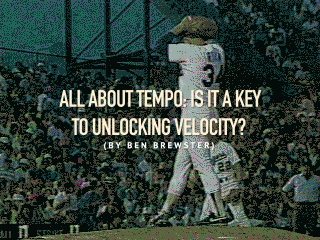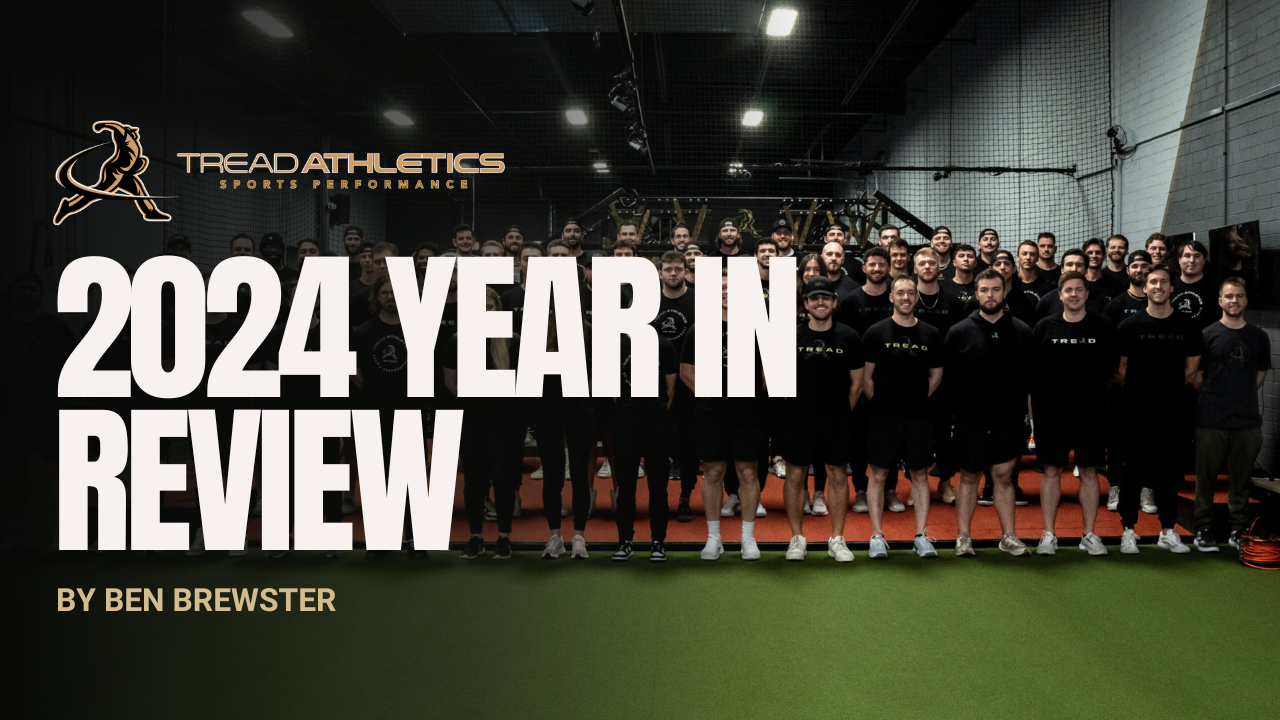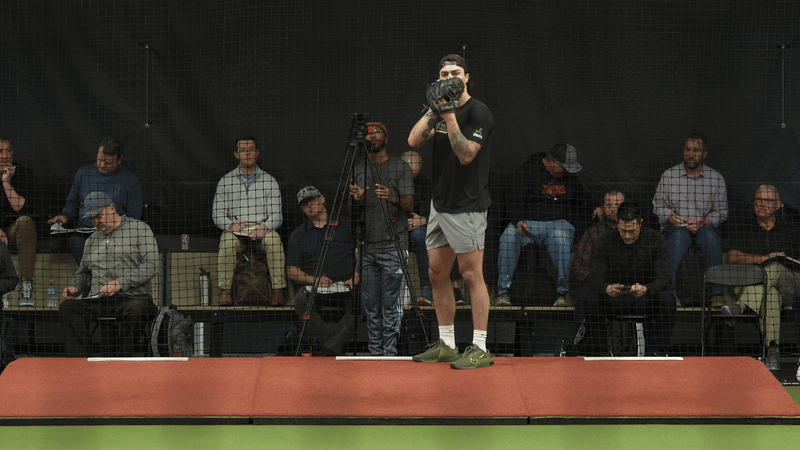by Ben Brewster
Tempo is an interesting topic that is most often heard in reference to holding runners. We need to get you to a 1.3 to the plate, Johnny! While there is undoubtedly value to being able to hold runners, I’d like to discuss tempo in a different context – how it relates to efficient, high velocity mechanics. It’s my perspective that tempo can be a valuable (and easily quantifiable) piece of the high velocity puzzle. But what is tempo? How do we quantify it? How do you compare to the best pitchers in the world? And is a faster/slower tempo always better?
Patience, young Padawan. I’ll get to all of these questions in this post.

What is tempo?
Tempo refers to the overall rate at which a pitcher moves through his mechanics – but with a few points worth noting. First, tempo is easiest to measure in “frames,” referring to a single video frame when playing back video on standard 30 frame-per-second video (the kind your smart phone or digital camera is set to film in by default). One frame therefore equals 1/30th of a second. By counting the video frames, you can easily quantify tempo in reference to a whole number (like 22 frames), rather than its correspondingly messy unit of time (22/30 = 0.733 seconds).
Second: tempo doesn’t directly refer to a pitcher’s time to the plate – although the two are strongly correlated. When measuring and examining tempo, I’m discussing the phase from peak leg lift until ball release. This is the piece of the throw that allows us to best compare tempo between windup vs. stretch throws of the same pitcher, and gives us a consistent frame of reference for comparing tempo between pitchers, an idea originated by Paul Nyman in the early 2000’s.
To illustrate this point, let’s compare Jacob Degrom’s tempo (using this method) between the windup and the stretch. Many would assume that his tempo is slower from the wind-up, but if you analyze video of him you’ll find that he is consistently 19-21 frames from peak leg lift to ball release in both cases, despite a much “slower” time to the plate out of the wind-up.

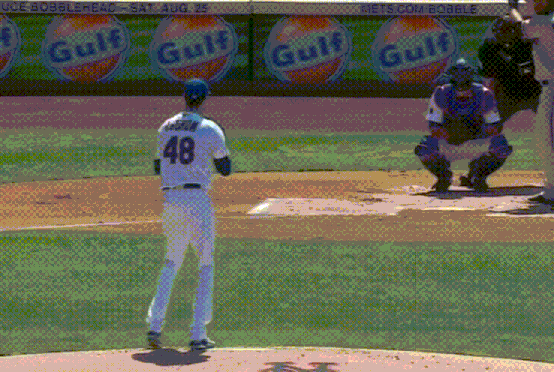
The third noteworthy point about tempo is this: a high level delivery, in regards to tempo, has an acceleration of the center of mass into ball release (acceleration is the rate of change of velocity).
It’s not just the overall rate or tempo that matters, it’s also the building up of this tempo that identifies how high level throwers move down the mound.
“It’s not just the overall rate or tempo that matters, it’s also the building up of this tempo that identifies how high level throwers move down the mound.”
Take, for instance, this gif of Nolan Ryan, edited so that every 5th frame is shown. Notice how the distance covered increases each interval, even though the time elapsed between frames is identical. Nolan Ryan is accelerating down the mound, and almost (if not all) high level throwers do this.
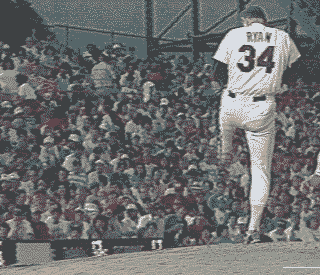
What is a good tempo to have?
One thing Nyman noticed when he began examining tempo 2 decades ago was that the vast majority of high level (95+ mph) throwers had tempos in the 20-25 frame range, quicker than many amateur and lower velocity pitchers.
Just look at how fast 20 frames is with Craig Kimbrel throwing in full speed:
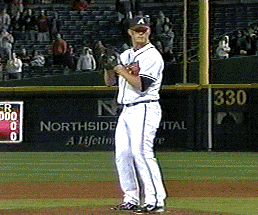
Let’s slow that down so you can actually see what’s happening:
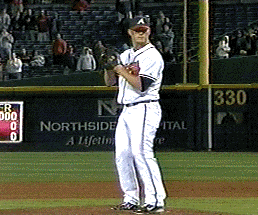
This rule of thumb hasn’t changed since then, but I’d still like to give more of a sampling of what this looks like:
Nolan Ryan had a pretty standard tempo for 95+ mph throwers, around 21-23 frames.
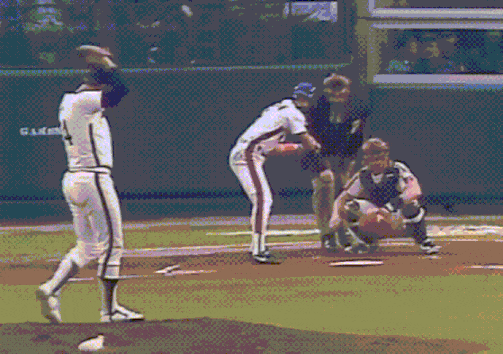
Some more examples…
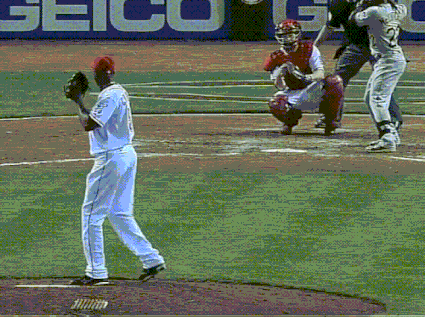
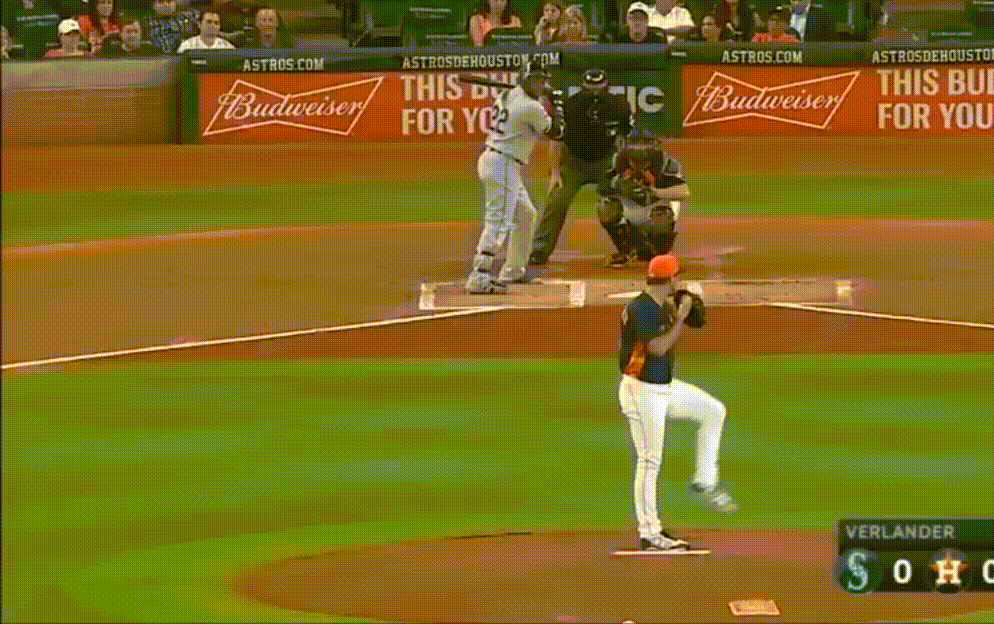
Nathan Eovaldi is on the slower side for 100 mph throwers (he doesn’t have an aggressive first move to the plate), but is still relatively quick at 23-25 frames from peak leg lift to ball release.
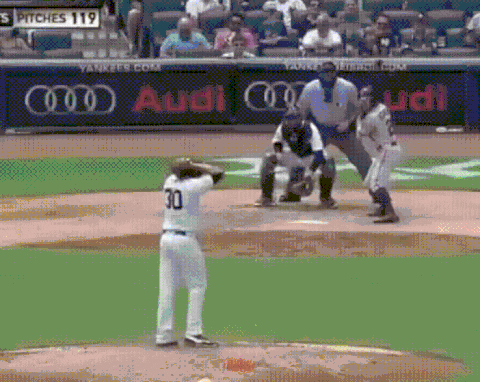
What about Gerrit Cole? He threw upper 90s both in high school and in the MLB. As it turns out, despite some noticeable “cosmetic” changes to his delivery since then, his tempo has barely changed, from 23-24 frames in high school to 24-25 frames currently. This is likely due to the reduction in aggressiveness of his first move to the plate.

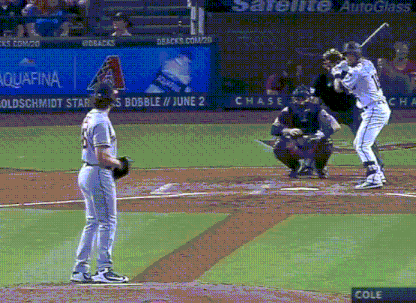
By contrast, here are a couple amateur athletes who have what I would consider fairly clean patterns and sequencing, but tempo is one of their main differences from high level throwers.
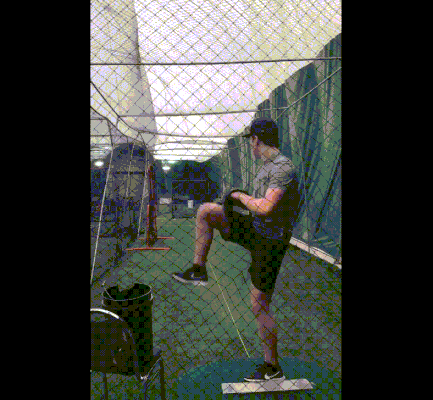
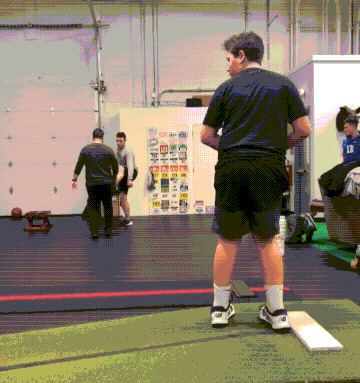
As you can see, both athletes tend to “stay back” much more than most 95+ mph throwers, not shifting their weight forwards as aggressively during the initial leg lift. As such, the rest of the throw takes longer to unfold. Rather than being in the 20-25 frames range, both fall over 30 frames with their tempos.
Despite this, it’s still possible to throw quite hard with a slower tempo, if sequencing and other factors are still good (more on this below).
Why do hard throwers all seem to have fairly quick tempos?
As I discussed in my previous post on the drift, most hard throwers initiate their center of mass towards the target early. This, I believe, is what accounts for most of the difference seen in tempo between low and higher velocity pitchers. Just rushing through poor patterns faster isn’t the solution – the sequencing, weight shift and positions of high level throwers are still extremely important for increasing tempo to yield any benefit.
“Just rushing through poor patterns faster isn’t the solution – sequencing, weight shift and positions are still important for increasing tempo to yield any benefit.”
Another reason tempo is correlated to harder throwers is the lack of energy leaks. Minimizing major pauses or hesitations maximizes segmental energy transfer. It also makes use of the stretch shortening cycle – the elastic recoil in your muscles/fascia that is available for a brief instant following a pre-stretch of the muscle. Think about how much more power you’ve got if you bounce a bench press out of the bottom vs. pausing at the bottom first – that’s a big reason why pauses or hitches in your arm action reduce the available power via a loss of the stretch reflex.
I’m not saying to bounce bench press reps (or even to bench press), just that we are powerful and springy when we can minimize unnecessary pauses in movement patterns and move dynamically out of our end ranges.

Is a faster tempo always better?
If you’ve been keeping up with these posts, you already know that there are no such thing as absolutes when it comes to pitching mechanics. While the hardest throwers almost all fall into the 20-25 frame range, not all of them do. Furthermore, quicker than this isn’t generally better, because it takes a certain amount of time to allow energy to build sequentially through the delivery. If quicker were better, we’d see more examples of 100 mph quick-pitches in the 15 frames range.
A failed experiment
One former pitching coach from the late 90’s/early 2000’s, the late Dick Mills, toyed with this idea in his now extinct philosophy of “momentum pitching.” Though it was a complete 180 of the philosophy he espoused up to that point, he hung his hat on this (flawed) idea for the last years of his coaching.
[Dick Mills on momentum pitching] “When done correctly it will increase a pitcher’s stride length to a minimum of 100% of his height instead of 90% minimum which was previously recommended. I have had success getting pitchers to stride over a foot beyond the height of their body. This added stride length is an indication of their momentum and speed of movement…the two most important elements for improving velocity.
This technique allows the build up of more kinetic energy (movement energy) that converts to more elastic energy upon landing. This stretching out of the pitcher’s body like a huge rubber band produces elastic energy and is how the body “sling shots” the arm into ball release at very fast speeds.”
The only problem with his theory is that it didn’t work all that well in practice, and failed to catch on due to the lack of results. We can agree that having a running start would increase velocity in most pitchers, but it’s clear that just increasing tempo and trying to lunge at the plate isn’t a substitute for a running start, nor is it the most efficient way to shift the center of mass from a stand still.
Here’s one of his former students showing this extreme up tempo approach, which is hard to measure without a true leg lift but comes to somewhere in the 14-16 frames range.
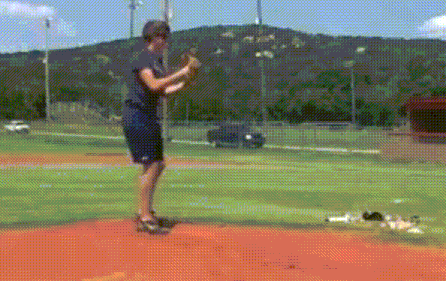
Remember that Nolan Ryan gif from above? Hard throwers build into their deliveries, with late acceleration into landing. Below, notice how there is a relatively constant tempo through the delivery (every 5th frame shown, approximate vertical axis of center of mass shown in red).
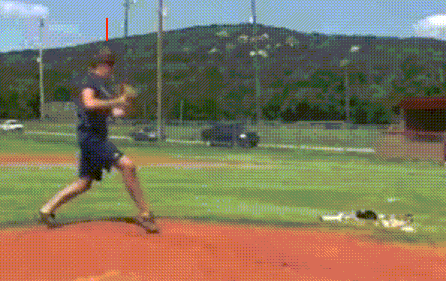
The Achilles’ heel of Dick Mills’ theory was not understanding that linear momentum is only a piece of the puzzle – not the whole puzzle. Sequencing – how the body segments relate to one another – ends up playing a larger role in velocity production than tempo (or linear momentum) in isolation.
Sequencing is king
What about x, y and z big leaguer who has a slower tempo than this? How do they do it?
The answer is first: that tempo isn’t everything. Tempo, however, allows for smoother energy transfer to take place in the majority of cases – by minimizing unnecessary pauses, delayed weight shift and energy leaks. But if tempo only accounts for a sliver of the velocity puzzle, you’re sure to find some hard throwers who don’t quite fit.
Ah yes, here’s one.

Caminero is an example of one of the slowest tempo 100 mph throwers that I’ve seen (30-31 frames). However, his sequencing is damn-near perfect, he gets into incredible positions, and he’s listed at a monstrous 6’4″ 250 lbs (and clearly reasonably lean). Point being, he makes up for his lack of tempo in other ways, allowing him to “break” the rules for hard throwers. I’d also like to point out my observation that, in general, long armed pitchers may require slightly longer for their arm actions to unfold, so it’s possible that body type plays a role in tempo as well and this actually could be what’s optimal for him. Randy Johnson (6’10”) supports this hypothesis as well.
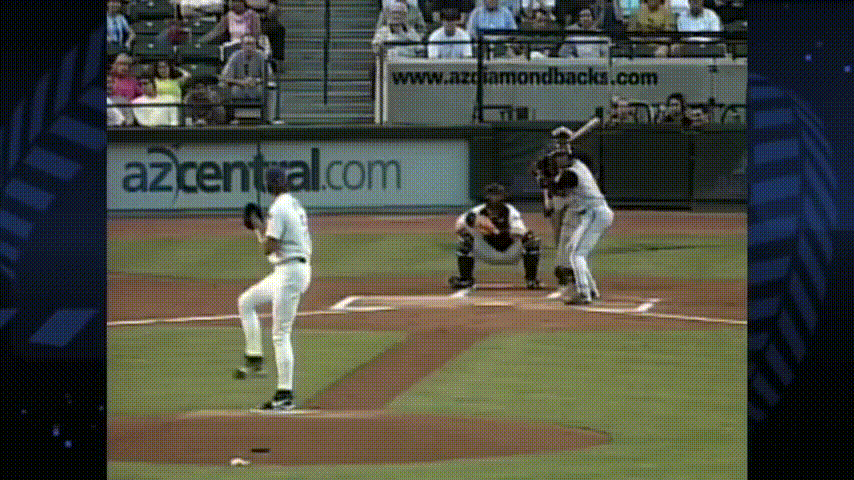
How do you improve tempo?
Two main ways – the first is not ruining it in the first place by actively cueing slow tempo and balance points. Just by encouraging athleticism and intensity, tempo has a way of improving itself.
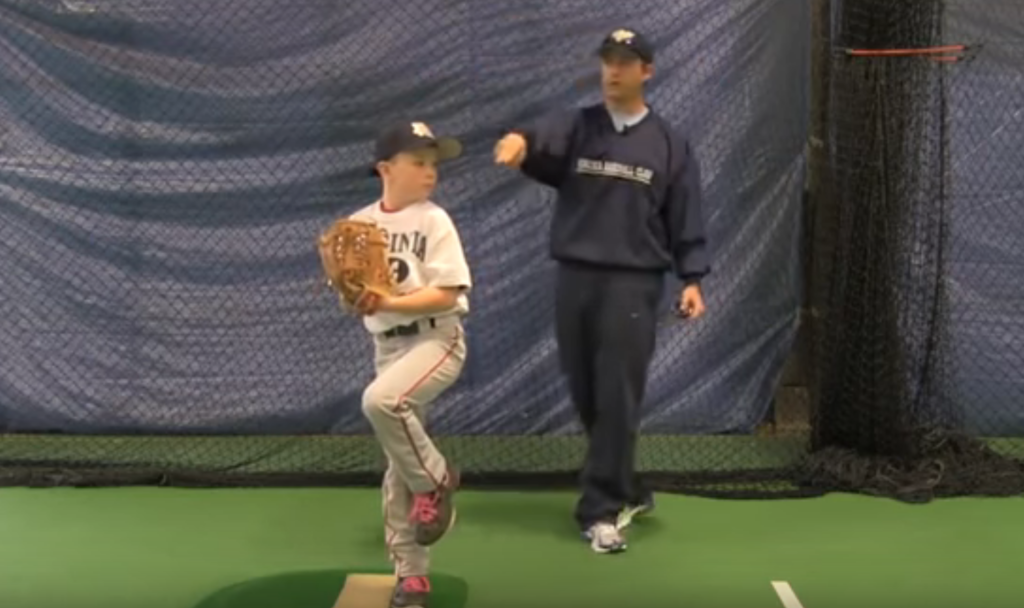
“Just by encouraging athleticism and intensity, tempo has a way of improving itself.”
Drills like walking wind-ups (or just throwing/long tossing out of the windup in general) are also useful for that.
What you don’t want to do is take a broken sequence (flying open, not segmenting the hips and shoulders, etc.) and just rush through that broken sequence faster to improve tempo.
Always address fundamental sequencing issues before tempo if both issues exist. If tempo starts to clean itself up on the way – bonus points for you.
However, the second and primary way to address tempo is actually indirectly, using the drift concept. By shifting your weight sooner (dynamic balance point) it sets up an inevitable acceleration and quick tempo for the rest of the throw (so as not to fall on your face).
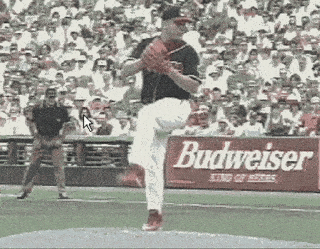
Thus, we work on tempo indirectly with most of our athletes, but still use it as a diagnostic tool for determining if an athlete is way outside of the typical hard throwing range.
Closing thoughts
Most of the hardest throwers have a quick tempo – they get there not by rushing through their deliveries, but by shifting their weight efficiently towards the plate. This helps minimize energy leakages and maximize the elastic properties of the muscles.
While dynamic and athletic drills can help encourage this, some pitchers may need to fundamentally address how they initiate their weight shift towards the target.
For coaches, examining tempo using frame-counting from peak leg lift to ball release is just another tool in your toolbox for identifying and addressing mechanical limitations.
If you have any questions or are interested in our remote coaching, email us at contact@treadathletics.com.
As always, thanks for reading!
Here’s to reaching your potential,
Ben
Athletes or coaches interested in remote one-on-one or team programming? Reach out via this application form.

